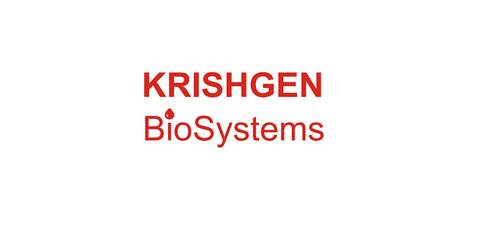Product Description
Mouse Succinate dehydrogenase [ubiquinone] flavoprotein subunit, mitochondrial (SDHA) ELISA Kit | AE20377MO | Abebio
Species Reactivity: Mouse (Mus musculus)
Abbreviation: SDHA
Alternative Name: FP; SDH1; SDH2; SDHF; succinate dehydrogenase complex flavoprotein subunit|succinate dehydrogenase complex; subunit A; flavoprotein
Application: ELISA
Range: 0.312-20 ng/mL
Sensitivity: 0.117 ng/mL
Intra-Assay: ≤5.7%
Inter-Assay: ≤7.5%
Recovery: 1, 03
Sample Type: Serum, Plasma, Other biological fluids
Detection Method: Sandwich
Analysis Method : Quantitive
Test Principale: This assay employs a two-site sandwich ELISA to quantitate SDHA in samples. An antibody specific for SDHA has been pre-coated onto a microplate. Standards and samples are pipetted into the wells and anySDHA present is bound by the immobilized antibody. After removing any unbound substances, a biotin-conjugated antibody specific for SDHA is added to the wells. After washing, Streptavidin conjugated Horseradish Peroxidase (HRP) is added to the wells. Following a wash to remove any unbound avidin-enzyme reagent, a substrate solution is added to the wells and color develops in proportion to the amount of SDHA bound in the initial step. The color development is stopped and the intensity of the color is measured.
Product Overview: SDHA encodes a major catalytic subunit of succinate-ubiquinone oxidoreductase, a complex of the mitochondrial respiratory chain. The complex is composed of four nuclear-encoded subunits and is localized in the mitochondrial inner membrane. Mutations in this gene have been associated with a form of mitochondrial respiratory chain deficiency known as Leigh Syndrome. A pseudogene has been identified on chromosome 3q29. Hirawake et al. (1994) isolated a cDNA corresponding to the flavoprotein subunit of SDH from a human liver cDNA library. The deduced 621-amino acid protein has a molecular mass of approximately 68 kD and shows high homology to the bovine heart flavoprotein subunit.
Stability: The stability of ELISA kit is determined by the loss rate of activity. The loss rate of this kit is less than 5% within the expiration date under appropriate storage condition. The loss rate was determined by accelerated thermal degradation test. Keep the kit at 37°C for 4 and 7 days, and compare O.D.values of the kit kept at 37°C with that of at recommended temperature. (referring from China Biological Products Standard, which was calculated by the Arrhenius equation. For ELISA kit, 4 days storage at 37°C can be considered as 6 months at 2 - 8°C, which means 7 days at 37°C equaling 12 months at 2 - 8°C) .
 Euro
Euro
 USD
USD
 British Pound
British Pound
 NULL
NULL

![Mouse Succinate dehydrogenase [ubiquinone] flavoprotein subunit, mitochondrial (SDHA) ELISA Kit Mouse Succinate dehydrogenase [ubiquinone] flavoprotein subunit, mitochondrial (SDHA) ELISA Kit](https://cdn11.bigcommerce.com/s-452hpg8iuh/images/stencil/1280x1280/products/847465/1139052/abebio__10018.1658410391__02838.1658419441.png?c=2)
![Mouse Succinate dehydrogenase [ubiquinone] flavoprotein subunit, mitochondrial (SDHA) ELISA Kit Mouse Succinate dehydrogenase [ubiquinone] flavoprotein subunit, mitochondrial (SDHA) ELISA Kit](https://cdn11.bigcommerce.com/s-452hpg8iuh/images/stencil/100x100/products/847465/1139052/abebio__10018.1658410391__02838.1658419441.png?c=2)
![Mouse Succinate dehydrogenase [ubiquinone] flavoprotein subunit, mitochondrial (SDHA) ELISA Kit Mouse Succinate dehydrogenase [ubiquinone] flavoprotein subunit, mitochondrial (SDHA) ELISA Kit](https://cdn11.bigcommerce.com/s-452hpg8iuh/images/stencil/500x659/products/847465/1139052/abebio__10018.1658410391__02838.1658419441.png?c=2)
![bluegene-succinate-dehydrogenase-[ubiquinone]-flavoprotein-subunit,-mitochondrial-sdha--elisa-kit bluegene-succinate-dehydrogenase-[ubiquinone]-flavoprotein-subunit,-mitochondrial-sdha--elisa-kit](https://cdn11.bigcommerce.com/s-452hpg8iuh/images/stencil/500x659/products/287919/434794/bluegene__36055.1625147875__27215.1625234760.jpg?c=2)
![Mouse Succinate dehydrogenase [ubiquinone] flavoprotein subunit, mitochondrial (SDHA) ELISA Kit Mouse Succinate dehydrogenase [ubiquinone] flavoprotein subunit, mitochondrial (SDHA) ELISA Kit](https://cdn11.bigcommerce.com/s-452hpg8iuh/images/stencil/500x659/products/388270/548422/sab-signalway-antibody__92073.1641690747__91737.1641697878__93467.1641864662__88276.1642545351__48705.1642558442.gif?c=2)
![Mouse Succinate dehydrogenase [ubiquinone] flavoprotein subunit, mitochondrial (SDHA) ELISA Kit Mouse Succinate dehydrogenase [ubiquinone] flavoprotein subunit, mitochondrial (SDHA) ELISA Kit](https://cdn11.bigcommerce.com/s-452hpg8iuh/images/stencil/500x659/products/859965/1152032/abbkine__86392.1644437967__55707.1644438366__43822.1658851373.jpg?c=2)

